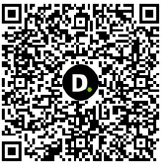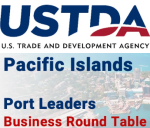The Maritime Workforce Development Network: A Moment of Opportunity

Today’s global economy depends on a maritime workforce, with nearly 90% of global trade passing through seaports1. In the United States, ports support more than one in eight jobs and serve as key economic drivers at local, regional, and national levels2.
Several new initiatives underway aim to revitalize and rebuild both the United States Maritime Industrial Base and the workforce that serves as its backbone. These economic drivers, coupled with recent global trends in technological advancement, present ports with an opportunity to play a leading role as a convener, accelerating industry-wide efforts to grow, strengthen, upskill, and reskill the maritime workforce.
Growing Workforce Development: Lead the Maritime Network
America’s ports can lead maritime workforce development with a focus on uniting technology innovation with human capital. As a convener in the maritime workforce network, a single port can bring together local and regional efforts alongside federal and national efforts to support similar workforce networks. It takes a village to build a robust, sustainable workforce across industry, government, community organizations, educational institutions and ports, to serve as the convening force within the maritime network.
Interrelated workforce development approaches have great potential, however, disparate funding across stakeholders and the absence of a clear leading agency does not always enable it. Many ports are actively engaged in workforce development initiatives, such as sponsoring technical high schools and establishing apprenticeship programs, which are already yielding positive results. Ports can leverage this success and drive the maritime network forward by adopting a broader perspective to align their workforce efforts, across other networks of skilled tradespeople, which must adapt to meet growth targets and market demand.
Shifting from Jobs to Skills: Promote an Agile Workforce
One area where ports can lead workforce efforts within the industry is by supporting the transition from title-based to skills-based indexing and workforce management. Ports face the same challenges seen across the infrastructure and supply chain spectrum — an aging workforce, declining recruitment rates, and the need to modernize and adapt to technology and supply chain innovation. Since 2019, the number of people in the U.S. aged 25 – 54, considered the “prime-age U.S. worker population,” has changed minimally, while the size of the 65 and older group has increased by nearly 5 million.
Given these factors, it is increasingly important for ports to focus on developing the specific trade and technical skills within the workforce rather than traditional job roles. This approach can create flexible and dynamic labor pools that can be deployed on demand and organized around immediate port needs or in preparation for growing trends.
In the past, skills-based deployment was a labor-intensive, complex undertaking. Today, artificial intelligence (AI) capabilities enable nearly seamless assessment and deployment processes, which can be applied to recruiting. Deloitte’s Labor Market Intelligence (LMI) technology can analyze the labor market to identify unfilled jobs, skill gaps, and available education and training opportunities by geography or industry. By leveraging tools that provide these insights and strategies, ports can more effectively assess future workforce needs and then locate and recruit those workers.
Embracing Technology and Innovation: Share Data Among the Maritime Network
Ports manage an important balance — embracing available and emerging technologies to enhance operational efficiency while retaining essential human capabilities. Equipping employees with new core skills empowers workers to maximize the impact of technology across port operations.
Ports can use AI predictive tools that look beyond the fence line to optimize trucking routes, manage congestion, and minimize community health impacts. Solutions such as these require collaboration with other stakeholders in the network. For example, tools for managing congestion require technology and AI literacy within the port workforce, extending to local and state transportation departments. This requires technology training and adoption fostered across the industry through joint training, apprenticeship, and workforce programming.
While enhancing operational efficiency through technology is crucial for maintaining competitiveness, the value of human performance — curiosity, creativity, and adaptability — remains irreplaceable by AI. Analysis of current and future technical and trade skillsets required to support ports and new technology must be considered alongside enduring human skills and traits. AI-supported workforce modeling with tools like Deloitte’s FutureCast or Workforce Analyzer can set a future-focused direction for workforce development that takes into account both technical and human skills.
Ports can foster an environment that encourages workers to explore new technologies. This approach would foster innovation by enabling workers to build confidence, learn new skills, and refine their human capabilities. It may also better attract the next generation of workers.
Charting the Path Forward: The Time Is Now
The maritime workforce is crucial to the global economy and is at an inflection point. As technological advancements and initiatives reshape this landscape, ports can enhance workforce development through a collaborative approach and by focusing on skills development rather than traditional roles.
As an advisor who understands a port’s complexity, Deloitte can share leading practices from our work with clients across the maritime industry, helping them make informed decisions to address workforce needs. We can assist ports in finding the right balance between embracing technology and preserving human capabilities to boost operational efficiency and foster innovation. The time is now to innovate and accelerate workforce programs, and our nation’s ports are primed to lead that charge.
For more information about Deloitte’s seaport work, visit our website here (https://www2.deloitte.com/us/en/pages/public-sector/solutions/infrastructure-services.html).
Editor’s Note: Seaports Magazine is proud to feature the voices of a wide variety of thought leaders who care deeply about ports and supply chain resilience, funding, and success. This and forthcoming articles like it solely express the sentiments of the writer and may not reflect the beliefs of the American Association of Port Authorities (AAPA) and its stakeholders or members.




